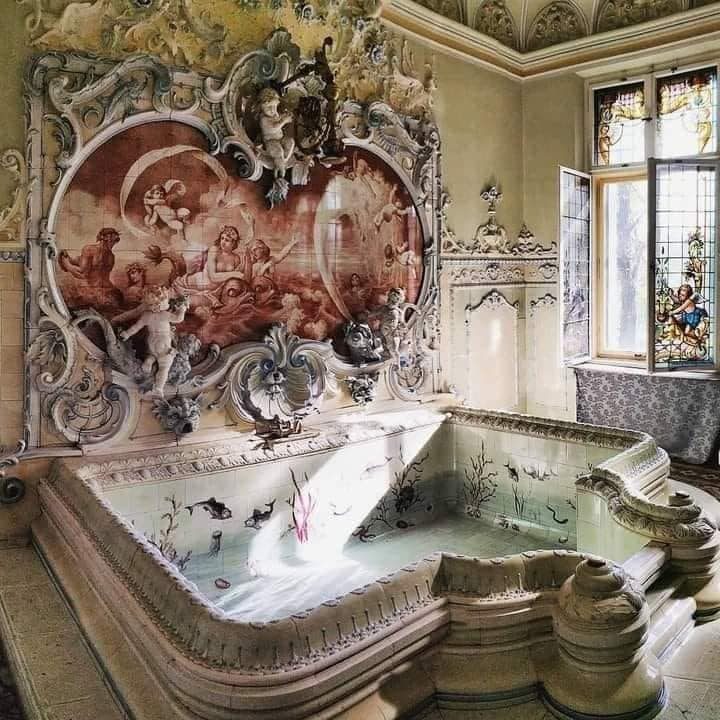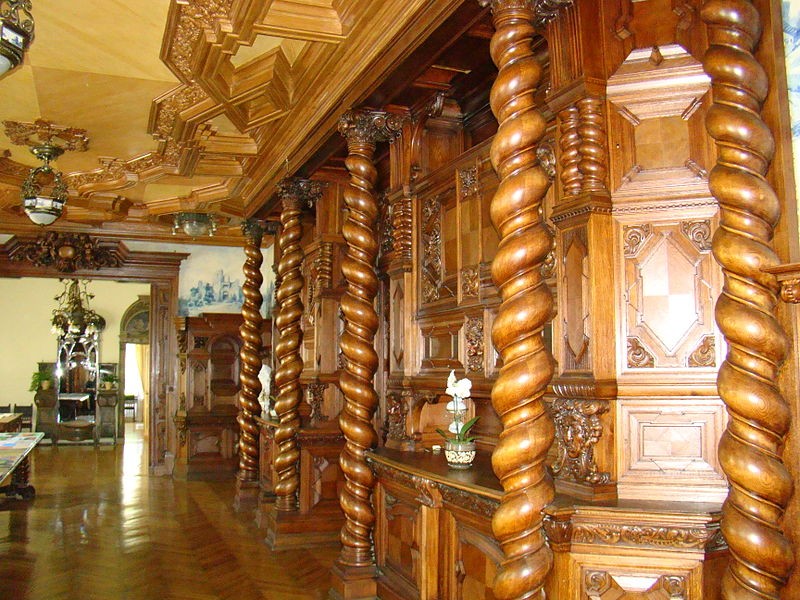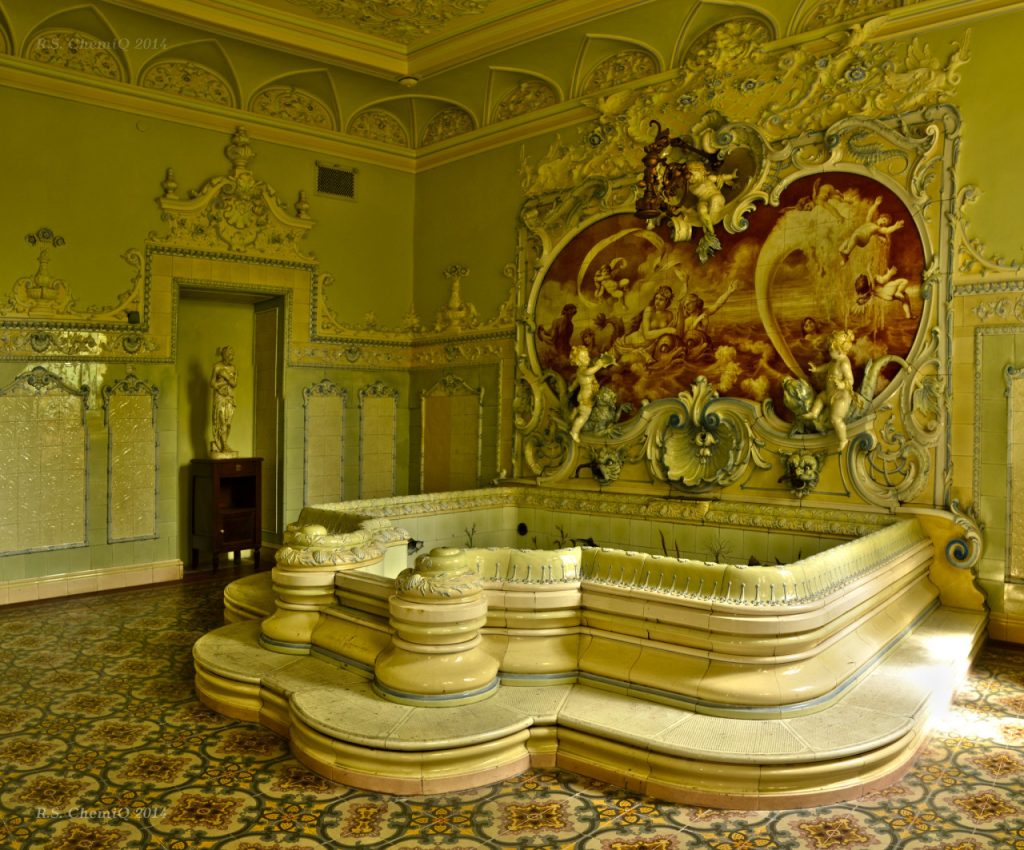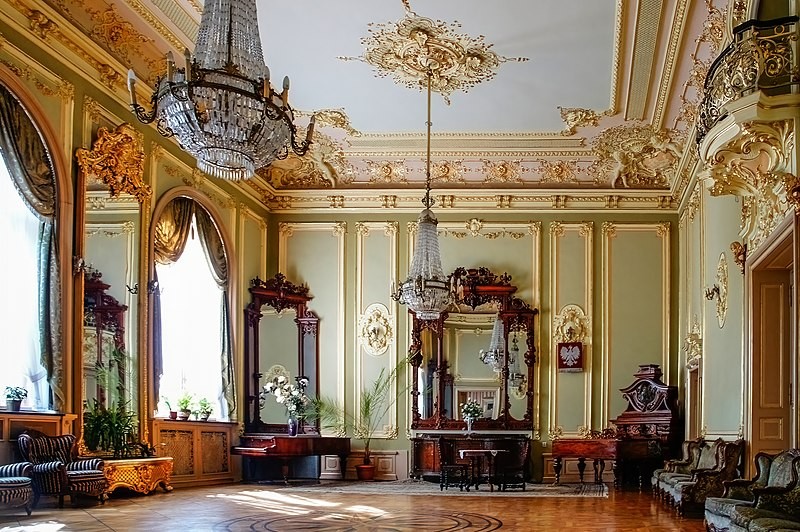Dietel Palace: A Neo-Baroque Gem in Sosnowiec, Poland

The Dietel Palace, also known as Pałac Dietla in Polish, stands as a neo-baroque marvel commissioned by Heinrich Dietel and is nestled in the charming town of Sosnowiec, Poland.

Architecturally, the palace comprises two distinct sections, a narrower northern portion, and a broader southern section. Its facades boast brick construction with exquisite details sculpted from plaster and artificial stone. The entire structure is crowned with elegant mansard roofs, adding to its grandeur.

Upon stepping inside, visitors are treated to a sight of carefully preserved original furnishings and decor, making the palace a treasured historical monument. The most impressive rooms are situated on the first floor and include:
- Ballroom: A breathtaking two-storey ballroom designed in the opulent style of Louis XV. Adorned with ornate mirrors and stucco work, it features a small balcony on its western wall.
- Neobarock Dining Room: This spacious room, also known as the Dutch Room or Couch Room, showcases oak wood paneling adorned with sideboards. Adding to its charm are panels depicting scenes reminiscent of Dutch paintings from Delft.
- Neo-Roman Pipe Room: A beautifully decorated room with intricate paneling depicting plant and animal motifs, cleverly integrating cabinets and seating. Additionally, two stained glass windows enhance the room’s allure.
- Art Nouveau Cabinet: Connected to the dining room by an imposing sliding door, this space boasts a ceiling adorned with stucco decorations.
- Bathroom: The opulent bathroom retains its rich facilities, largely unchanged since its illustrious past. This exclusive palace bathroom even played a role in the film “Between the Mouth and the Shores of the Cup.”

Steeped in history, Dietl Palace holds a significant place as one of the most splendid residential buildings in the entire Silesian Province. Constructed towards the end of the 19th century, it was the brainchild of Henryk Dietl, a German entrepreneur renowned for launching the first worsted wool spinning mill in the Kingdom of Poland, located in Sosnowiec.
The palace served as the esteemed residence of the Dietl family until 1945, when it fell under the occupation of the Soviet NKVD headquarters, resulting in substantial damage to parts of the palace and its furnishings. From then until 1997, the building was repurposed as the seat of the Music School.

Since 1997, the palace has been privately owned and has been undergoing meticulous renovation work. Remarkably, the interiors have preserved their original splendor throughout the years. Particularly captivating is the ballroom, exhibiting the resplendent style of Louis XV with its mirrored walls and stucco embellishments. The second-largest room, the dining room, stands out with its magnificent cupboards.

The initial architectural plans for the palace were conceived in the 1880s by Waligórski, with the final project taking shape in 1890. Around 1900, the palace grounds were enhanced with a walled premise, a conservatory, and charming elements of small architecture. The palace was an integral part of a patronage complex, including the park, a former factory, a workers’ settlement, and an evangelical church.
Visitors and enthusiasts alike now have the opportunity to explore the palace since 2016, and its halls can be rented for memorable banquets and events, offering a unique and enchanting experience steeped in history and architectural brilliance.